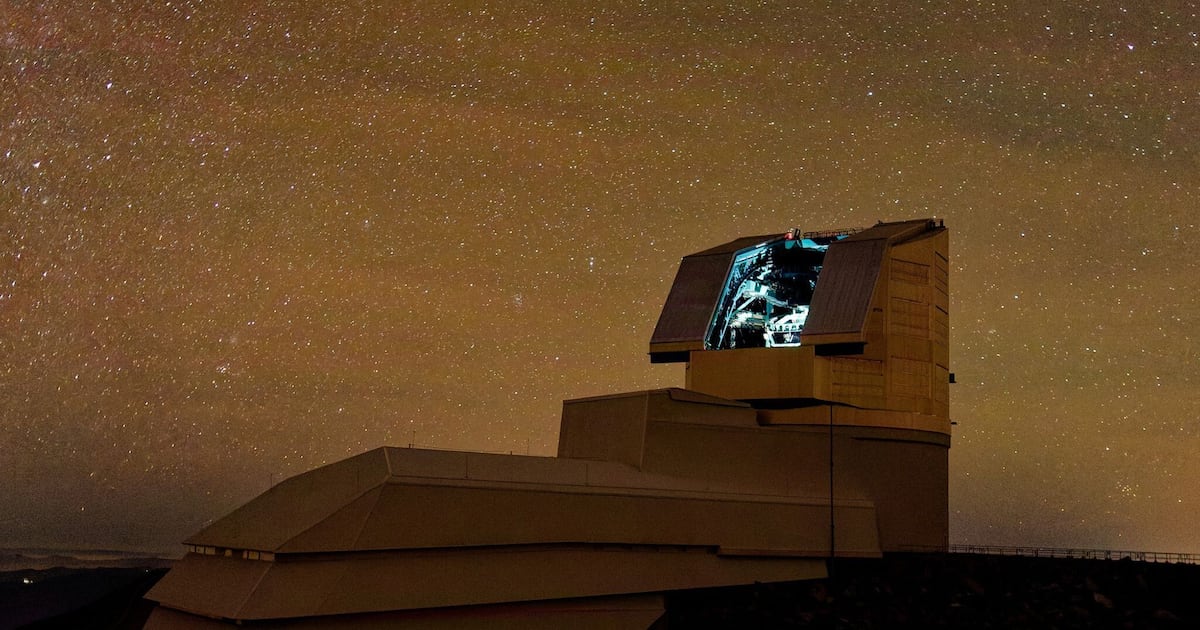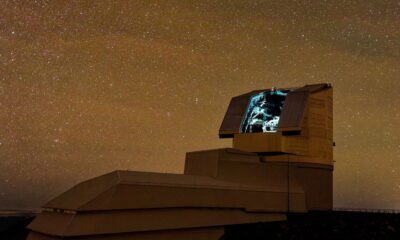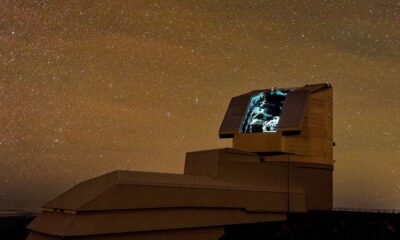Science
New Study Challenges Assumptions About Dark Energy’s Role

Recent research suggests that the expansion of the universe may not be accelerating as previously believed, but rather slowing down. This conclusion, if validated, could fundamentally alter our understanding of dark energy, the mysterious force thought to counteract gravity in the universe.
The concept of dark energy emerged from observations of Type 1a supernovas in 1998, when two teams of astronomers discovered that distant supernovas appeared dimmer than expected, leading to the conclusion that they were moving away from Earth at an accelerating rate. This groundbreaking finding earned the researchers the Nobel Prize in Physics in 2011. Despite this recognition, the precise nature of dark energy has remained elusive, with its role in the universe’s expansion occasionally facing scrutiny.
A major milestone occurred last year when a large consortium of researchers utilizing data from the Dark Energy Spectroscopic Instrument (DESI) in Arizona created the largest three-dimensional map of the universe to date. Their findings indicated a potential weakening of dark energy over time, suggesting that the universe’s expansion rate could eventually decelerate.
On November 6, a study published in the Monthly Notices of the Royal Astronomical Society offered further support for this theory, implying that dark energy may no longer exert the same force it once did. Young-Wook Lee, a professor of astrophysics at Yonsei University in South Korea and the lead researcher of this new study, stated, “The DESI project’s findings represented a major paradigm change… and our result, in some sense, agrees well with that.”
The researchers examined a sample of 300 galaxies hosting Type 1a supernovas. They proposed that the observed dimming of these distant stars was influenced not only by their distance from Earth but also by the age of their progenitor stars. Junhyuk Son, a doctoral candidate at Yonsei University and coauthor of the study, explained, “Before our work, Type Ia supernovae were thought to explode with nearly identical intrinsic brightness, making them highly reliable ‘standard candles.’ However, we found that their luminosity actually depends on the age of the stars that produce them.”
The team expressed high confidence in their findings, with a statistical reliability of 99.99 percent regarding the age-brightness relationship. Son noted that if confirmed, this discovery could represent “the most significant shift in cosmology since the discovery of dark energy in 1998.” It would suggest that the universe’s expansion is not currently accelerating and that dark energy may evolve over time.
The implications of this research are profound. If the universe continues to slow in its expansion, it might eventually lead to a contraction, potentially culminating in what astronomers term the “big crunch,” a scenario that contrasts sharply with the prevailing model of continual expansion. Lee remarked, “Even two years ago, the Big Crunch was out of the question. But we need more work to see whether it could actually happen.”
While the study has sparked interest, it has also faced skepticism from some experts. Adam Riess, a professor at Johns Hopkins University and a co-recipient of the 2011 Nobel Prize in Physics, criticized the research, stating it relies on a flawed premise. He contended that today’s supernovas are predominantly formed from young stars, contradicting the study’s claims.
Lee countered this criticism, asserting that Type Ia supernovas occur in both old and young galaxies, thus challenging Riess’s assertion. He added that the age-brightness correlation has been independently verified by researchers in the United States and China.
Other experts echoed Riess’s skepticism. Dan Scolnic, an associate professor of physics at Duke University, stated that the study leaps from host galaxy age to supernova age without sufficient justification. “The universe is still accelerating just fine,” he affirmed.
Despite the backlash, Lee remains committed to his findings. He acknowledged the controversy surrounding the research and expressed the need for ongoing debate within the supernova cosmology community. He also highlighted the upcoming launch of the Vera C. Rubin Observatory in early 2026, which aims to provide a comprehensive survey of the universe. This initiative is expected to yield more than 20,000 new supernova host galaxies with precise age measurements, allowing for a more direct test of the cosmological implications of their findings.
Lee concluded by stating, “Dark energy is getting weirder and weirder. But there is no good theory that can explain this very weird behavior. Maybe, in five years, an even more surprising result can come up.” The ongoing investigation into dark energy and its effects on the universe continues to engage the scientific community, with implications that may reshape our understanding of cosmic evolution.
-

 Politics3 weeks ago
Politics3 weeks agoSecwepemc First Nation Seeks Aboriginal Title Over Kamloops Area
-

 World4 months ago
World4 months agoScientists Unearth Ancient Antarctic Ice to Unlock Climate Secrets
-

 Entertainment5 months ago
Entertainment5 months agoTrump and McCormick to Announce $70 Billion Energy Investments
-

 Lifestyle4 months ago
Lifestyle4 months agoTransLink Launches Food Truck Program to Boost Revenue in Vancouver
-

 Science5 months ago
Science5 months agoFour Astronauts Return to Earth After International Space Station Mission
-

 Technology3 months ago
Technology3 months agoApple Notes Enhances Functionality with Markdown Support in macOS 26
-

 Top Stories2 months ago
Top Stories2 months agoUrgent Update: Fatal Crash on Highway 99 Claims Life of Pitt Meadows Man
-

 Lifestyle3 months ago
Lifestyle3 months agoManitoba’s Burger Champion Shines Again Amid Dining Innovations
-

 Sports5 months ago
Sports5 months agoSearch Underway for Missing Hunter Amid Hokkaido Bear Emergency
-

 Politics4 months ago
Politics4 months agoUkrainian Tennis Star Elina Svitolina Faces Death Threats Online
-

 Politics4 months ago
Politics4 months agoCarney Engages First Nations Leaders at Development Law Summit
-

 Technology5 months ago
Technology5 months agoFrosthaven Launches Early Access on July 31, 2025




















